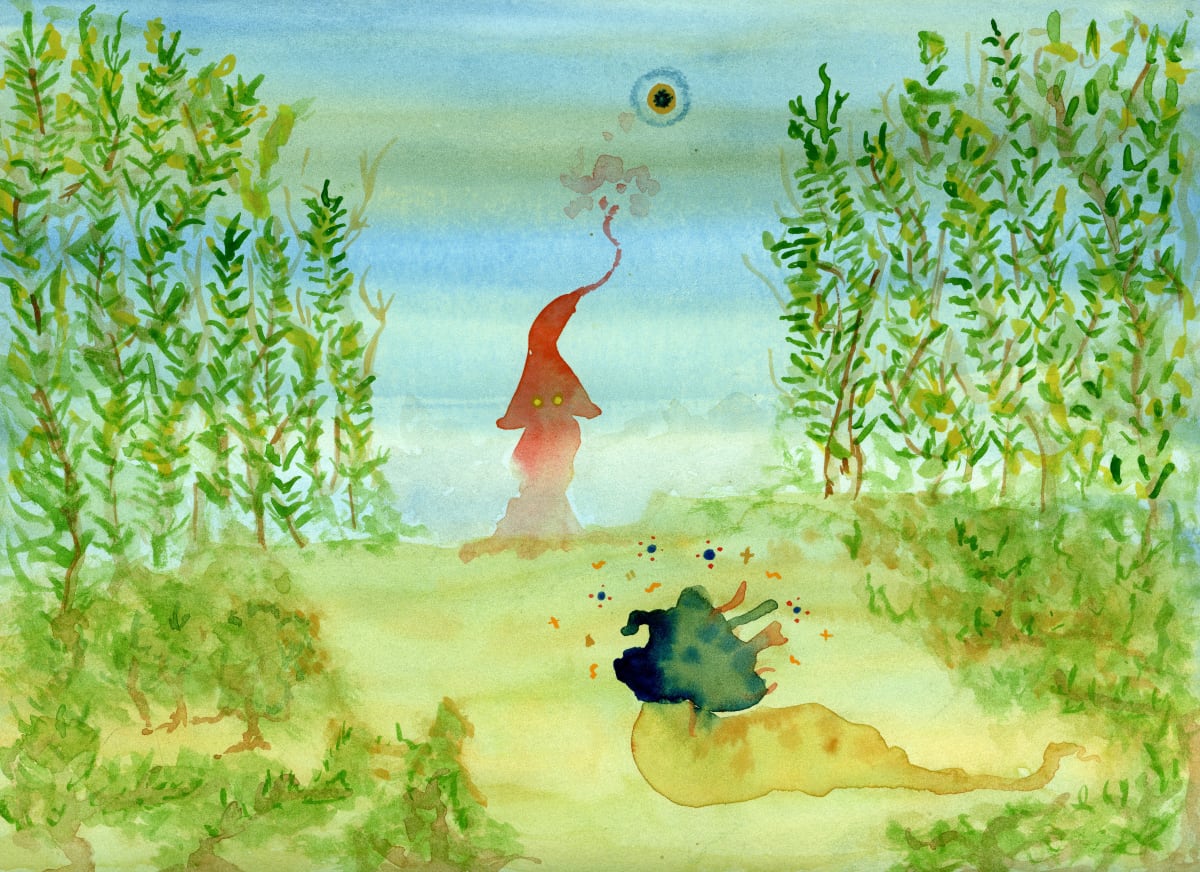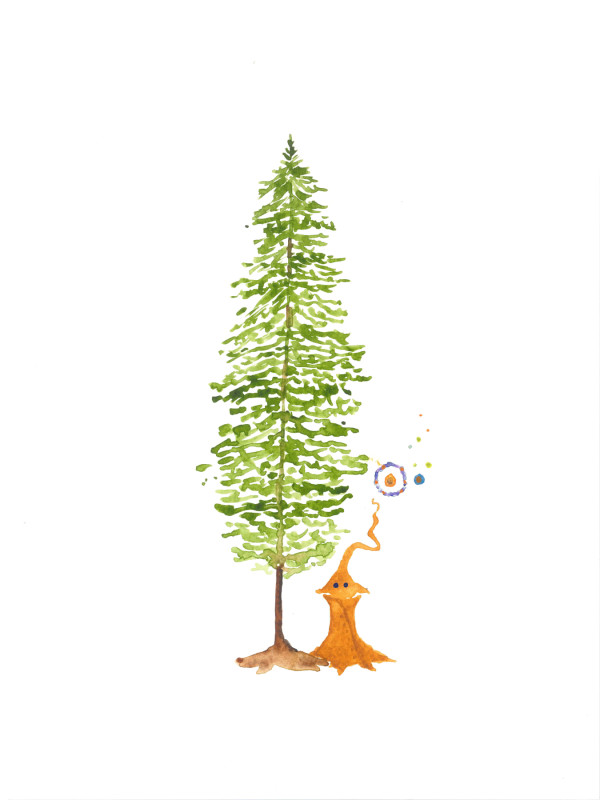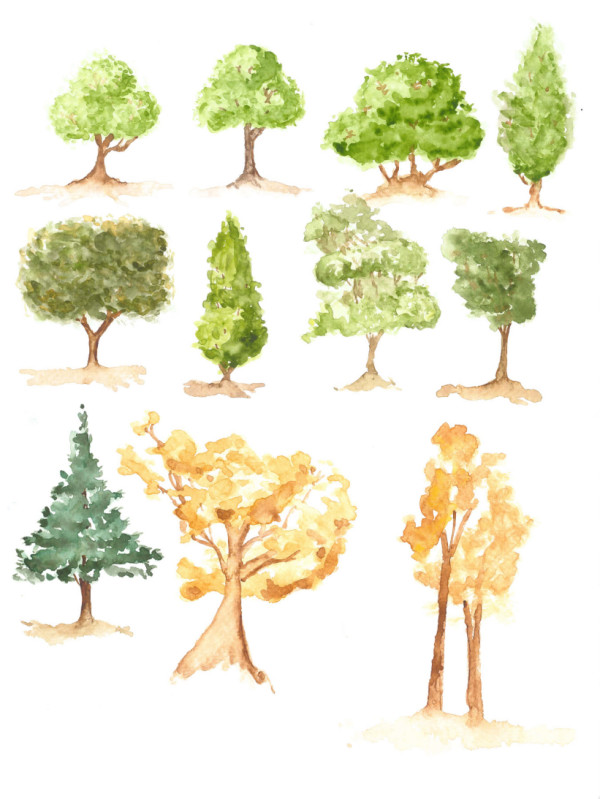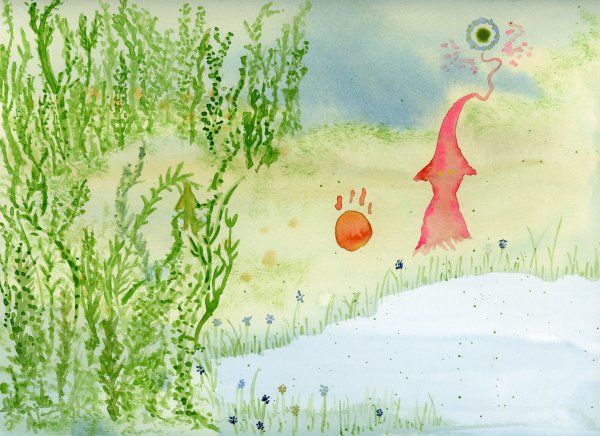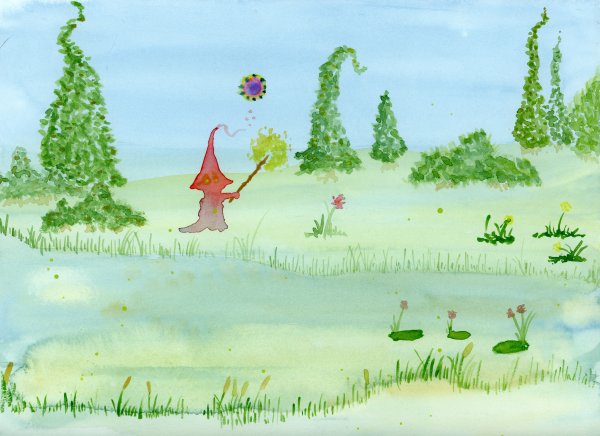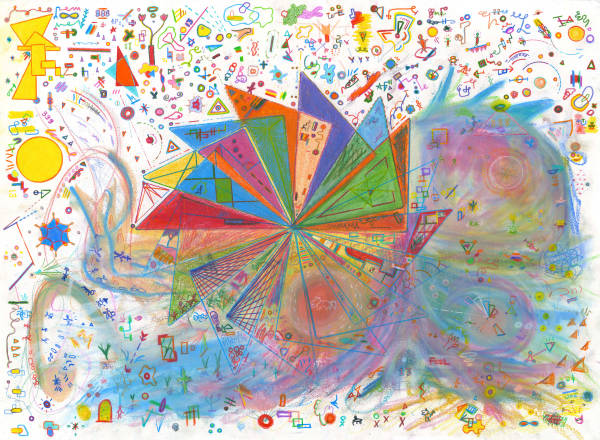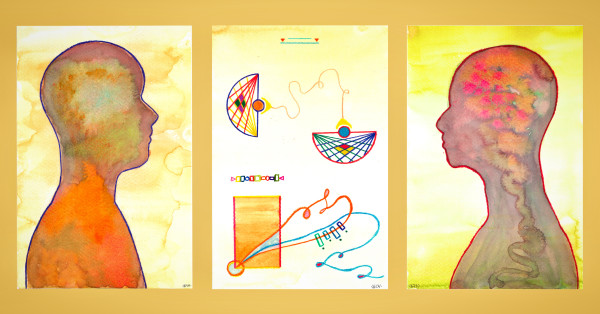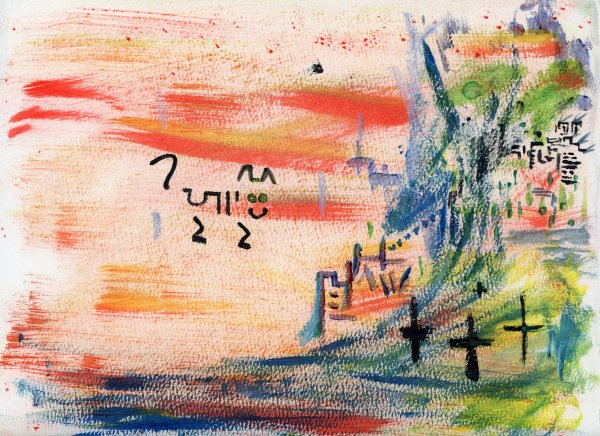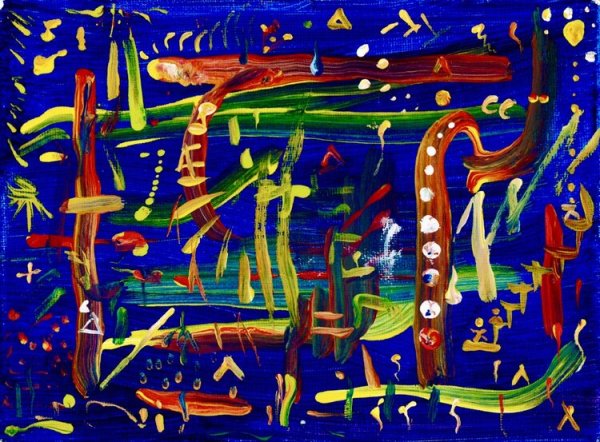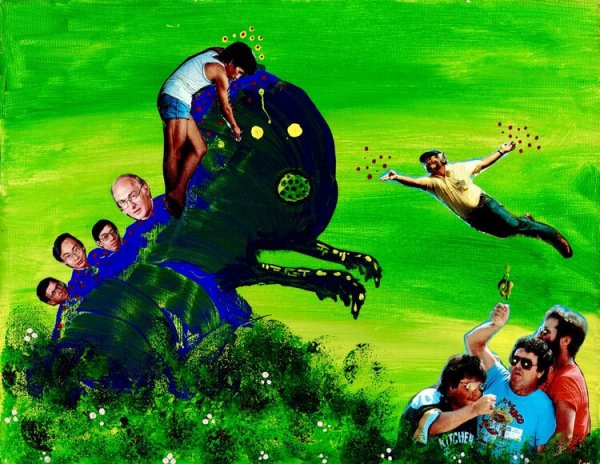In this scene, the duwende has stepped deeper into a forest of tall, reed-like plants that ripple and sway as if under water.
The air feels fluid, otherworldly.
Ahead stands a strange creature, its form both curious and cautious.
The duwende remains calm and centered, bathed in soft, magical light.
Colors and glimmers emanate from them like currents.
A visual language of power and communication.
It’s unclear whether the duwende is casting a spell, offering a blessing, or weaving a wordless dialogue, but the creature seems entranced within this moment.
'Watcher of the Threshold' captures a point of contact between two beings: one familiar, one unknown.
The scene reads like a magical negotiation rather than a confrontation.
The duwende, a benevolent guide from Filipino folklore, appears not as a trickster but as a mediator, blending serenity with potency.
The forest’s underwater quality blurs boundaries: land and sea, material and spiritual, self and other.
This ambiguity invites the viewer to ask: What does it mean to enter a space where language dissolves and presence becomes a form of communication?
By leaving the narrative open-ended, Jairus invites us into a state of wonder, witnessing a duwende not as a quaint myth but as a living emissary of unseen realms.
The result is both mystical and intimate: a glimpse of magic happening mid-breath, with no clear end in sight.
- Subject Matter: Magic
- Collections: Duwende, The Magick Forest

